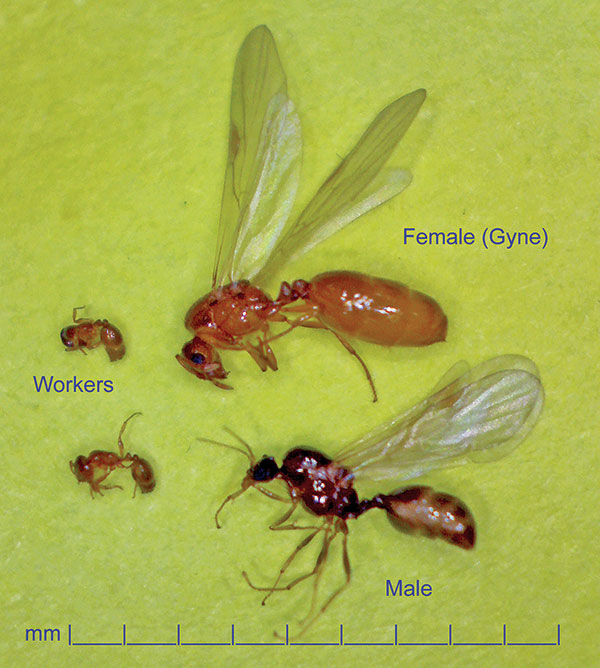You have to wonder what thief ants (Solenopsis molesta) did to get their name. Swipe packs of gum from the grocery store checkout lane? Steal purses from old ladies?
Actually, thief ants are named for their tendency to nest close to other ant species’ nests, and then take their neighbors’ food, eggs and larvae.
Their small size probably makes it easy for them to get away with their bad behavior. Workers are monomorphic, or the same size, and measure 1/32 in. to 1/16 in. long.
Their colonies also are small, and may include several queens and workers, who may number in the hundreds to the thousands.
Thief ants are lighter in color than most other small ants. They may be pale yellow or light brown. Don’t confuse them with pharaoh ants (Monomorium pharaonis), which also are small and light-colored but have antennae with 12 segments instead of 10. You will see a three-segmented enlarged club at the tip of the antenae on pharaoh ants, instead of two for thief ants.
When the weather is hot, thief ants will find their way indoors through small openings and cracks. The wires in wall voids are like superhighways; the ants use them to get from one room to another. Thief ants forage in trails, seeking foods that are greasy and protein-rich (and sweets if those are nowhere to be found). They feed on dead rodents and insects as well.
Indoors, thief ants nest in cracks and crevices in masonry and wood, and wall voids. Outdoors, they nest in exposed soil, rotted wood and tree cavities or under rocks, logs, bricks and other objects on the ground.
Interested in a thief ant wedding? Below is video of a nuptial flight in central New Jersey.
https://www.youtube.com/watch?v=vXW4JdFtIx8
Managing Editor Diane Sofranec can be reached at dsofranec@northcoastmedia.net or 216-706-3793.

Leave A Comment